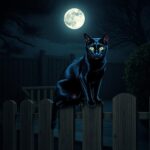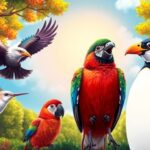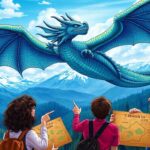Dragons have captured our imaginations for centuries with their fiery breath, magnificent wings, and treasure-filled lairs. But these mythical creatures aren’t just for epic tales—they make perfect subjects for brain-teasing riddles that challenge and entertain puzzle enthusiasts of all ages.
We’ve gathered the most captivating dragon riddles that will spark your creativity and test your problem-solving skills. Whether you’re looking to challenge your friends, engage your students, or simply enjoy a mental workout, these dragon-themed brain teasers deliver the perfect combination of fantasy and fun. Ready to match wits with these scaly enigmas?
10 Mind-Bending Dragon Riddles for Fantasy Enthusiasts
- The Ancient Guardian
I’m older than mountains but younger than stars,
I guard golden treasures behind stone bars.
My breath brings destruction, my wings block the sun,
From knights and brave heroes, most choose to run.
What am I?
Answer: A dragon
- The Scaled Puzzle
Covered in armor no sword can pierce through,
I change colors depending on my mood.
My cousins breathe fire, but I prefer ice,
When crossing my path, you’d best think twice.
What creature am I?
Answer: An ice dragon
- The Winged Enigma
Neither bird nor bat, yet I rule the sky,
Centuries I’ve lived while others die.
I speak in riddles and breathe deadly flame,
Challenging heroes who seek fame.
What mythical being am I?
Answer: A dragon
- The Treasure’s Keeper
Sleeping on riches that shine and gleam,
I wake with fury when disturbed from my dream.
My scales like armor, my teeth like swords,
I’ve collected treasures from knights and lords.
Who guards this hoard?
Answer: A dragon
- The Fire Breather
Born from an egg harder than stone,
I grow mighty wings once fully grown.
My breath can melt castles and knights in their mail,
My roar causes armies to quiver and quail.
What fantasy creature am I?
Answer: A fire dragon
- The Serpent King
No legs have I, yet wings spread wide,
In Eastern lore, I’m revered with pride.
I bring luck and wisdom, not terror and fear,
I dance through clouds when New Year is near.
What mythical creature am I?
Answer: A Chinese dragon
- The Immortal Beast
I’ve lived through ages of men and their kings,
My wisdom grows deeper with each passing spring.
I’ve seen empires rise and watched them fall,
Yet time’s cruel touch affects me not at all.
What am I?
Answer: An immortal dragon
- The Shadow Flyer
By day I hide in mountain caves deep,
While villages below peacefully sleep.
By night I hunt with silent wings unfurled,
A phantom predator in the moonlit industry.
What creature stalks the dark?
Answer: A night dragon
- The Element Master
Four siblings we are, with different might,
Earth, water, fire, and air unite.
Each controls an element with scaled might,
Our power greatest when we all unite.
What fantasy creatures are we?
Answer: Elemental dragons
- The Shapeshifter
Sometimes a lizard, sometimes a man,
I change my form whenever I can.
Ancient magic flows through my veins,
Wisdom of centuries my mind contains.
Ancient Dragon Riddles from Mythology and Folklore
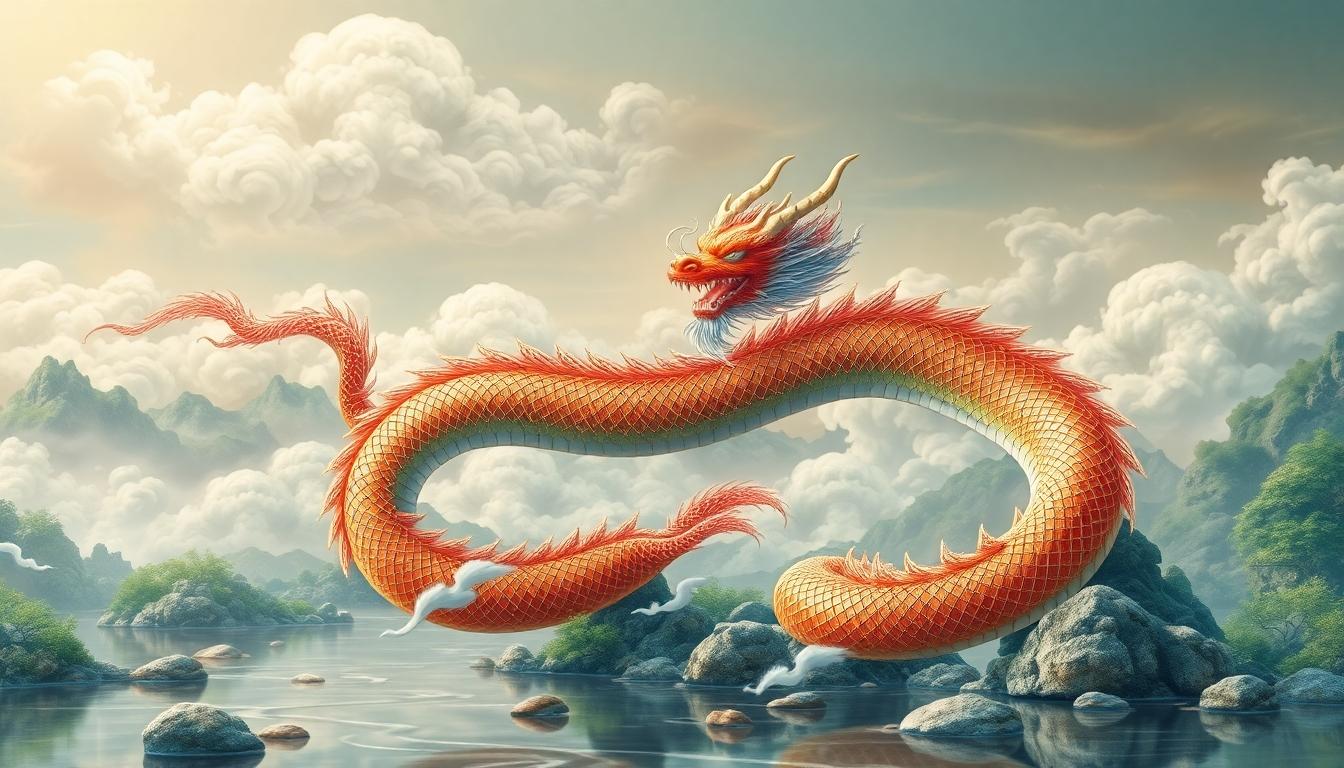
Dragons have captivated human imagination for millennia, appearing in riddles and puzzles that test wit while conveying cultural wisdom. These ancient brain-teasers reveal how different civilizations perceived these mythical beasts.
Norse Dragon Enigmas
Norse mythology gives us fascinating dragon lore centered around the infamous Fáfnir. Originally a dwarf prince, Fáfnir transformed into a fearsome dragon after succumbing to greed. His tale serves as inspiration for many riddles about cursed treasure and corruption. While exact dragon riddles from Norse records remain scarce, the archetypal themes of hoarding wealth and transformation provide rich material for enigmas. Many modern Norse-inspired riddles focus on Fáfnir’s encounter with the hero Sigurd, challenging puzzle-solvers to contemplate the consequences of greed and the nature of courage.
Eastern Dragon Puzzles
Eastern dragon riddles contrast sharply with their Western counterparts, emphasizing harmony rather than conflict. These puzzles frequently highlight the dragons’ water-based powers and their role as benevolent guardians. Chinese dragons control rivers, summon rain, and maintain cosmic balance, reflected in riddles like: “I dance through clouds but never fly, I bring life-giving tears from the sky.” Traditional Eastern dragon riddles often incorporate lunar symbolism and imperial connections, challenging listeners to recognize these wise serpentine beings. The dragons’ ability to transform and their association with good fortune make them perfect subjects for complex cultural riddles that test both knowledge and reasoning abilities.
Unlike Western dragons that guard treasures from heroes, Eastern dragon puzzles celebrate these creatures as symbols of wisdom and natural harmony. Their serpentine forms and connection to water elements feature prominently in traditional riddles that have been passed down through generations. Many Eastern dragon riddles require familiarity with cultural contexts, making them educational tools that preserve important mythological knowledge while entertaining puzzle enthusiasts.
Fire-Breathing Riddles That Will Test Your Wits
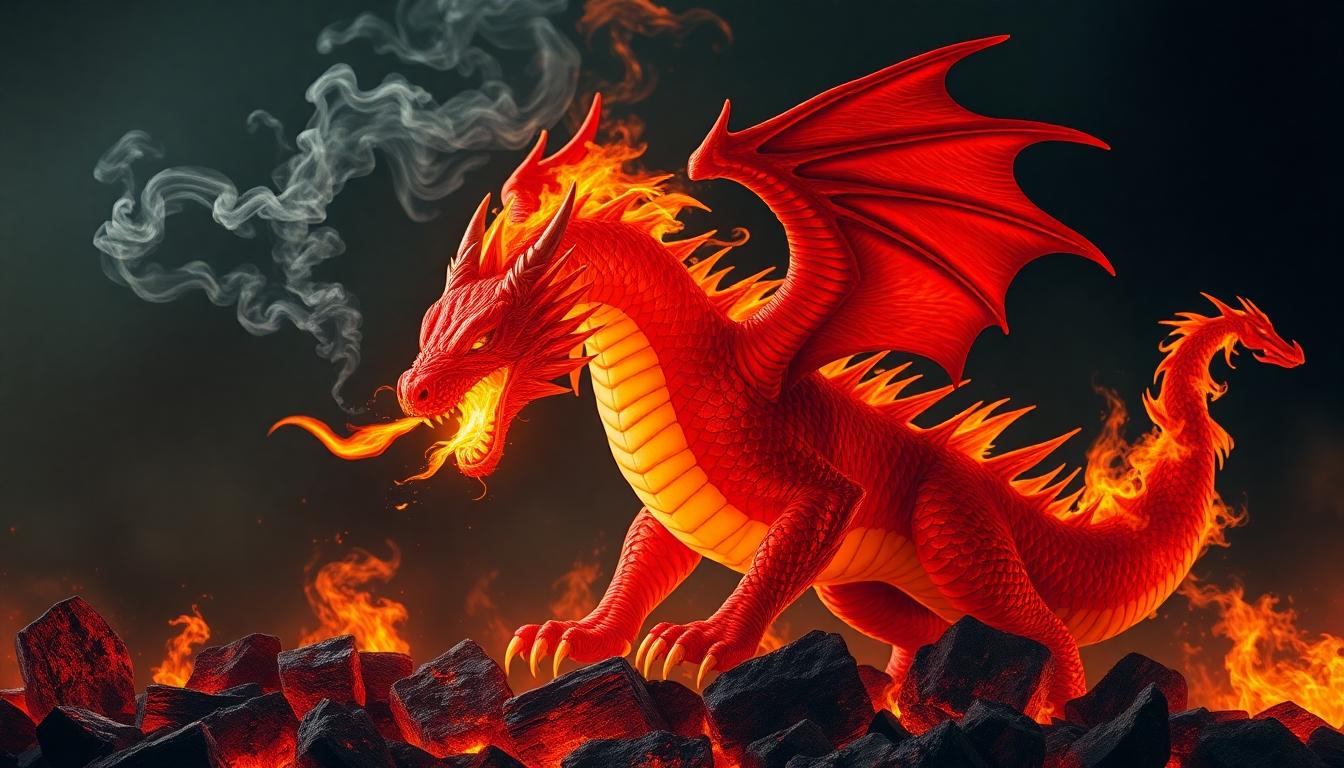
Ready to challenge your problem-solving skills with some scorching brain teasers? These fire-themed dragon riddles will spark your imagination while testing your critical thinking abilities.
Flame and Smoke Conundrums
Fire dragons represent some of the most iconic mythical beasts in folklore, making them perfect subjects for challenging riddles. The classic fire dragon riddle states: “My breath can melt, my claws can slice, I am a creature you don’t want to entice. Who am I?” The answer is simply a Fire Dragon, showcasing the creature’s destructive capabilities while inviting puzzle solvers to envision its fearsome nature. These flame-based riddles often incorporate elements of danger and power, playing on the dragon’s most recognizable feature – its ability to breathe devastating fire. When solving these conundrums, look for clues related to heat, destruction, and transformation through flame.
Heat-Related Brain Teasers
Dragons with fire-breathing abilities feature prominently in riddles that test logical thinking through temperature-related clues. One particularly challenging example asks solvers to consider what cannot be touched even though generating immense heat, leading to the answer of dragon fire. Many heat-related dragon riddles play with contrasting elements, such as in the Winter Dragon riddle: “With each flap of wings, I create frost, turning the air cold, at every cost. Though fire and heat are not my flair, my chill will follow you everywhere.” This clever twist on dragon expectations demonstrates how these creatures transcend simple fire associations to cover various elemental powers. The best dragon brain teasers use these temperature extremes to create captivating mental challenges that require creative thinking to solve.
Dragon Treasure Hunt Riddles for Adventure Seekers
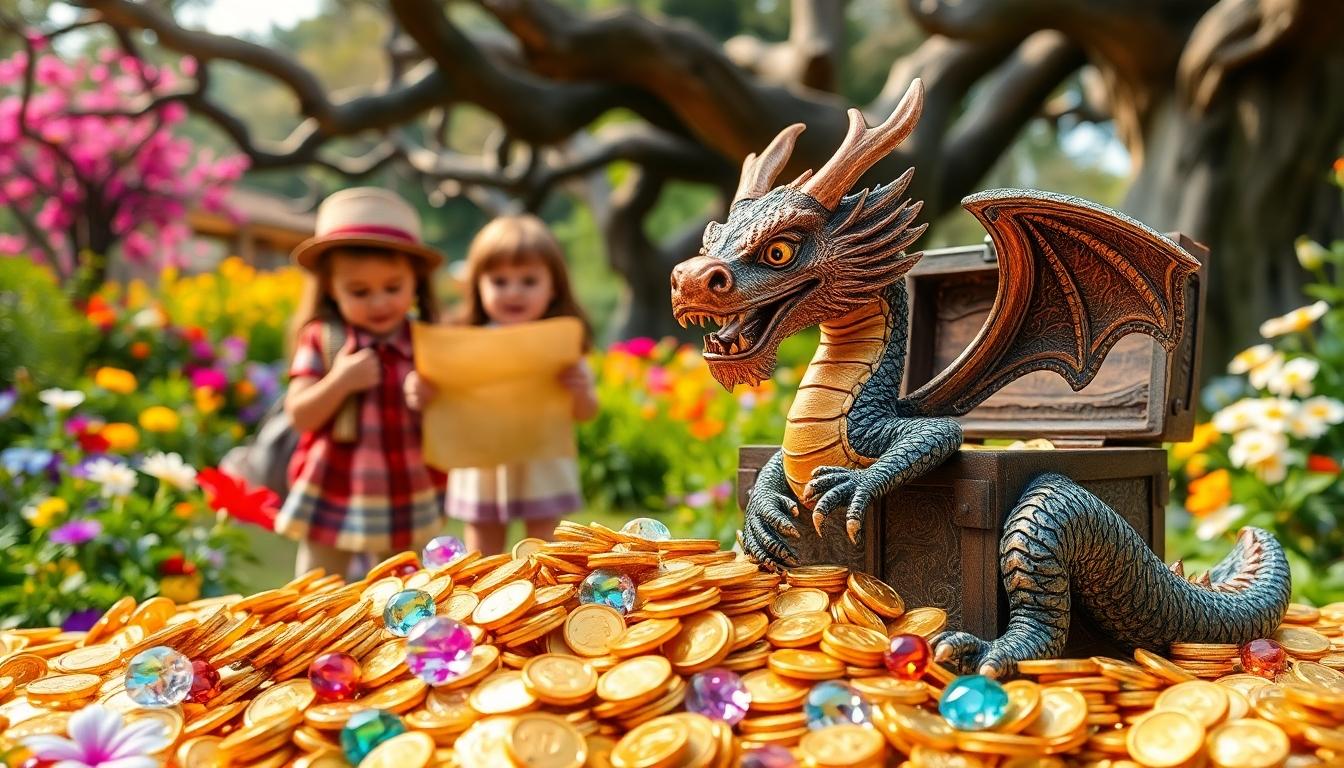
Gold Hoard Mysteries
Dragon treasure hunts captivate adventurers with riddles that blend mythical elements and natural phenomena. These gold hoard mysteries often feature treasure-guarding narratives that highlight a dragon’s eternal vigilance over their precious metals. A popular example includes “No knight can steal my treasure so bright, For my flame burns through the night” – challenging seekers to outsmart the legendary guardian. Elemental attributes frequently appear in these riddles, such as the Earthquake Dragon whose clue reads “I move mountains with mighty claws…rocks and stones grow” – hinting at both the creature’s power and its connection to hidden underground riches.
Gem and Jewel Puzzles
Jewel-themed dragon riddles transform ordinary scavenger hunts into epic quests for legendary treasures. Classic puzzles frame gems as narrative objectives with riddles like “I’m a treasure sought by many a knight, a search to claim the light” – making the hunt more immersive for participants. Location-based clues guide seekers through themed environments with exact directions such as “Down the stairs to a flowering tree for coin #3” or “Check the table centre for your final prize.” Successful treasure hunts balance physical exploration with mythical storytelling by referencing household items while maintaining the fantasy theme, for instance, “Beerstein holds your fourth coin” or exact room challenges in the “laundry room” or “living room drawer.” Many printable hunt designs extend engagement by incorporating complementary puzzles like mazes, code breakers, and word searches that further the dragon-themed adventure.
Scales and Wings: Physical Feature Riddles

Dragon riddles that focus on physical characteristics blend mythological elements with clever wordplay, challenging puzzle enthusiasts to think beyond obvious answers. These enigmas often incorporate distinctive draconic features like armored scales, massive wings, and fearsome claws into their construction.
Armored Hide Enigmas
Armored hide riddles showcase dragons’ natural defenses and elemental resistances, creating puzzles that are both challenging and imaginative. Many of these riddles emphasize the impenetrable nature of dragon scales, portraying them as living armor that “shields without a sword, yet warriors fear me.” Fire dragons frequently appear in these puzzles with lines like “My breath can melt, my claws can slice, I am a creature you don’t want to entice,” drawing on their formidable combat attributes. Geological themes merge with draconic imagery in riddles about Earthquake Dragons that “move mountains with mighty claws,” establishing connections between natural phenomena and mythical beasts. The combination of protective outer layers and destructive capabilities creates contradiction-based puzzles that require solvers to think from multiple perspectives simultaneously.
Soaring Challenges
Flight-related dragon riddles explore both literal and metaphorical movement through air, often with surprising answers that subvert expectations. Elemental dragons dominate this category, with Winter Dragons whose “flap of wings create frost” and whose “chill will follow you everywhere,” connecting atmospheric conditions to draconic powers. Shape-shifting abilities feature prominently in riddles about Changeling Dragons that “are not bound to one single form” but instead “control their shape as they please,” highlighting morphological versatility. Clever riddles in this category sometimes lead to unexpected answers like “jet plane” rather than an actual dragon, using misdirection with lines about gliding “through the sky, fast and sleek” or roaring “through the clouds, with lightning’s aid.” Aquatic connections also appear in puzzles about dragonflies, which ingeniously conflate the insect’s name with mythical dragon lineage to create delightful wordplay challenges.
Dragon’s Lair Riddles: Location-Based Brain Teasers

Dragon’s lair riddles transform ordinary locations into mythical realms through cleverly designed location-based brain teasers. These environmental puzzles challenge participants to think spatially while incorporating dragon mythology into physical spaces. Many adventure seekers enjoy these riddles because they combine intellectual challenge with exploration, making them perfect for educational settings and interactive games.
Location-based dragon riddles often incorporate natural features of the environment, turning rock formations into “sleeping dragons” or winding paths into “dragon tails.” These puzzles frequently use the surrounding industry as integral components of the riddle itself, creating immersive experiences for solvers. Natural features like caves, mountains, and waterways become perfect settings for dragon-themed challenges that test both problem-solving abilities and observation skills.
Earthquake Dragon riddles exemplify how these location-based teasers can incorporate geological themes. “I move mountains with my mighty claws, splitting the earth with ancient laws. No fire I cast, no heat I show, but the rocks and stones will surely grow” challenges participants to connect dragon imagery with tectonic forces. These environmental riddles help players understand natural phenomena through the lens of dragon mythology, making science concepts more captivating and memorable.
Adventure parks and educational institutions frequently use dragon lair riddles to create captivating scavenger hunts that combine physical activity with mental challenges. Participants might follow clues leading to a “dragon’s hoard” hidden somewhere on the premises, with each location offering a new riddle to solve. The versatility of these puzzles makes them adaptable for various settings, from classrooms to outdoor excursions, where they serve as powerful tools for captivating audiences in interactive problem-solving activities.
Designing effective location-based dragon riddles requires careful attention to the environment and clear connections between physical spaces and mythological elements. Creators often embed cultural references that connect to the exact setting, improving both the challenge and educational value of the experience. These versatile brain teasers transform ordinary spaces into extraordinary adventures, making them increasingly popular tools for educators and entertainment designers seeking to create memorable, immersive experiences.
Dragon Magic and Spell Riddles for Wizards in Training

Dragon riddles serve as powerful training tools for aspiring wizards, combining mythical imagery with complex problem-solving challenges. These magical enigmas often focus on abstract concepts like invisibility and concealed power, encouraging young practitioners to interpret metaphors about unseen forces. We’ve gathered some of the most enchanting dragon spell riddles that will sharpen your magical thinking and prepare you for greater arcane challenges.
Guardian of Secrets Riddles
Dragon guardians feature prominently in wizard training riddles, emphasizing vigilance and the protection of hidden knowledge. “I guard my cave, forevermore” is a classic example that teaches apprentices about the importance of magical boundaries. These riddles typically require solvers to think about what lies beyond physical protection—often representing the guarding of powerful spells or ancient wisdom rather than mere treasure.
Elemental Magic Challenges
The elemental duality in dragon riddles makes them perfect for teaching responsible magic use. Riddles like “My breath can melt, my claws can slice” reinforce lessons about harnessing natural elements with care and precision. Young wizards must identify which elemental properties are being described, training them to recognize magical signatures in their spellcasting practice.
Paradoxical Spell Patterns
Many dragon riddles incorporate clever paradoxes that mirror the mysterious nature of spellcraft. “I fly without moving, I burn without smoke” challenges apprentice wizards to think beyond literal interpretations of magical phenomena. These structural patterns teach young spellcasters to look for the unexpected connections between seemingly contradictory magical effects.
Sensory Magic Perception
Dragon riddles often employ sensory contradictions that train wizards to perceive magic beyond their physical senses. “My roar is mighty, yet no one hears” teaches students about magical energies that exist beyond normal perception. These riddles strengthen a wizard’s ability to detect and interpret magical signatures that remain invisible to untrained observers.
Key and Lock Enchantments
The metaphorical relationship between keys and dragons appears frequently in wizard training riddles. “What force and strength cannot get through, I with a gentle touch can do” (with the answer being “key”) reminds apprentices that brute magical force often fails where subtle enchantment succeeds. Dragons guarding secrets become powerful symbols for the delicate balance between magical power and precision.
Legendary Dragon Battles Told Through Riddles
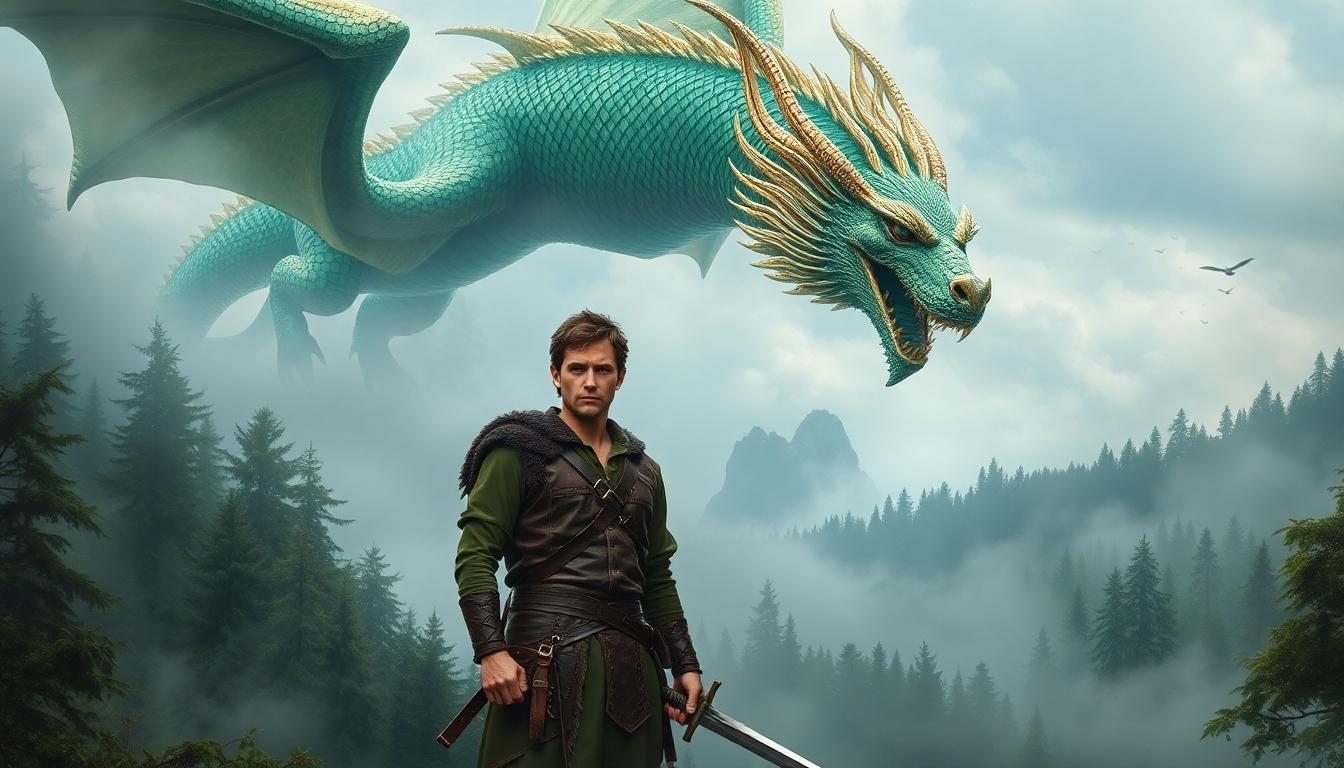
The Battle of Wits vs. Physical Combat
Dragon riddles transform traditional combat narratives into intellectual challenges where heroes face mental tests rather than physical dangers. In the classic tale “The Dragon and His Grandmother,” three soldiers escape their doomed fate by solving the dragon’s riddles, including the famous question: “What walks on four legs in the morning, two at noon, and three in the evening?” This riddle represents the stages of human life and serves as a life-or-death trial rather than a violent confrontation. Rather than sword fights or fire blasts, these battles test human ingenuity and quick thinking against draconic wisdom.
Symbolic Origins in Nature
Dragon attributes we recognize today likely evolved from ancient riddles describing real creatures through metaphorical language. Research connects dragons’ fire-breathing abilities to early poetic descriptions of honeybees, which produce wax (associated with light and heat) while guarding their hive “treasures.” These connections reveal how riddles serve as cultural bridges linking mythological beasts to natural phenomena. The fiery imagery and treasure-hoarding behaviors often attributed to dragons potentially originated as clever wordplay in ancient riddle traditions.
Modern Storytelling Applications
Contemporary folklore has preserved the tradition of dragon riddles while adapting them to modern storytelling formats. The “Riddle of the Golden Dragon” features dragons attacking villages until provided with satisfactory answers to their puzzles. Video games like “The Elder Scrolls Online” incorporate dragon-themed riddles as search barriers that players must overcome to access treasures or advance their adventures. These modern adaptations maintain riddles’ traditional gatekeeping role while integrating them into interactive experiences that appeal to today’s audiences.
Thematic Elements of Dragon Riddle Battles
Dragon riddle battles consistently feature themes that transcend cultural boundaries and time periods:
- Dragons embody dual threats through physical danger and mental challenges, with riddles often representing unspoken fears or societal taboos
- These tales frequently conclude with moral lessons where protagonists succeed through humility or lateral thinking rather than brute force
- Riddle-based dragon narratives effectively transmit cultural values like resourcefulness across generations
By recasting mythical confrontations as battles of intellect rather than strength, dragon riddles create timeless metaphors for human problem-solving abilities. These brain-teasing challenges demonstrate how cleverness can overcome seemingly insurmountable odds, offering lessons that remain relevant regardless of era or cultural context.
Modern Dragon Riddles from Popular Fantasy Series
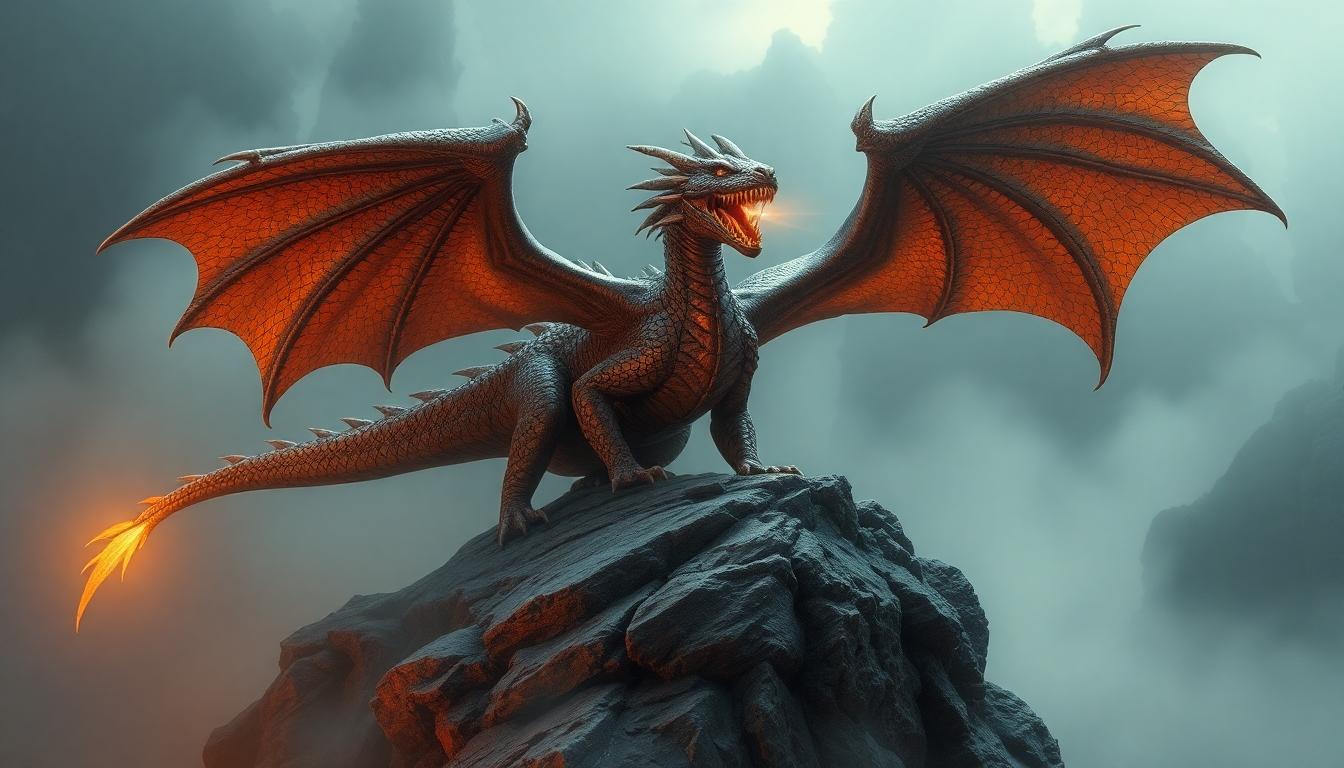
Contemporary fantasy literature has transformed dragon lore, introducing new dimensions to these mythical creatures through clever riddles and puzzles that challenge readers’ intellects.
Game of Thrones Dragon Puzzles
Though dragons like Drogon and Viserion play pivotal roles in “Game of Thrones,” they aren’t traditionally associated with riddles in either the books or TV adaptations. Their significance lies primarily in their physical power and symbolic importance to the storyline rather than in posing enigmatic questions. Modern dragon-themed puzzles inspired by this series typically appear in games and interactive media where mental agility is tested. Players might encounter shadowy riddles such as “I am stuck at the bottom, yet easily fly. I am present in sun, but hidden in rain. What am I?” with the answer being “A shadow.” These puzzles draw on dragon imagery but adapt it to suit contemporary puzzle-solving formats.
Tolkien’s Dragon Enigmas
Dragons in J.R.R. Tolkien’s legendary works function more as cunning conversationalists than riddle creators. Smaug from “The Hobbit” engages in verbal sparring with Bilbo Baggins, demonstrating wit and intimidation rather than posing formal riddles. Tolkien’s rich linguistic foundation has nonetheless inspired many fantasy riddles that mimic his distinctive style. Collections of fantasy riddles frequently reference Tolkien-esque wordplay with structures like “It is cold and it is hot / It is stone and it is wax” (answer: a dragon’s heart) or “My flames are bright, but don’t burn / My wings are wide, yet I can’t turn” (answer: a dragon statue). Fantasy puzzle designers have effectively merged traditional dragon characteristics such as fire-breathing and flight with metaphorical logic, creating captivating challenges for tabletop games and literary contexts. These riddles showcase how modern fantasy has adapted ancient dragon mythology into brain-teasing entertainment that captivates contemporary audiences.
How to Create Your Own Dragon Riddles: Tips and Techniques
Dragon riddles stand as timeless gateways into realms of imagination and critical thinking. We’ve journeyed through mythology cultural traditions and modern adaptations exploring how these enigmatic puzzles challenge minds across generations.
Why not create your own dragon riddles? Start with a exact dragon type consider its unique traits and transform those characteristics into clever clues. The best riddles balance difficulty with solvability inviting contemplation without frustration.
Remember dragons embody both power and wisdom destruction and protection. This duality offers rich material for creating puzzles that entertain educate and inspire. Whether shared around campfires or in classroom settings dragon riddles continue to ignite our collective imagination and sharpen our wits.
Frequently Asked Questions
What makes dragon riddles different from other types of riddles?
Dragon riddles uniquely blend mythological elements with logical puzzles, often incorporating characteristics specific to dragon lore such as fire-breathing, treasure-hoarding, and magical abilities. Unlike standard riddles, they tap into our cultural fascination with these legendary creatures, creating more immersive and thematically rich brain teasers that challenge both imagination and problem-solving skills.
How do Eastern and Western dragon riddles differ?
Eastern dragon riddles typically emphasize harmony, wisdom, and benevolence, portraying dragons as revered celestial beings associated with good fortune. Western dragon riddles, particularly from Norse mythology, often depict dragons as fearsome adversaries or guardians of treasure, focusing on themes of conquest and heroism. These cultural differences reflect broader mythological traditions and societal values.
Can dragon riddles be educational for children?
Absolutely! Dragon riddles combine storytelling with critical thinking, helping children develop problem-solving skills, vocabulary, and cultural awareness. They introduce mythology and folklore in an engaging format, encourage creative thinking, and can be adapted to different age groups and learning objectives. They’re particularly effective for developing lateral thinking abilities in a fun, imaginative context.
What historical significance do dragon riddles have?
Dragon riddles have served as cultural bridges between myth and reality for centuries. In ancient societies, they functioned as educational tools, preserved folklore, and explained natural phenomena. Some historians believe certain dragon attributes originated from riddles metaphorically describing real creatures like crocodiles or snakes. These puzzles reflect how different civilizations perceived unexplained natural events and dangerous animals.
How are dragon riddles used in modern storytelling?
In modern storytelling, dragon riddles often function as plot devices that characters must solve to progress in their journey. They appear in fantasy literature, video games, tabletop RPGs, and interactive fiction as barriers to treasures or adventures. Contemporary authors have transformed traditional dragon lore through clever puzzles that challenge both characters and audiences, adding depth to narratives and worldbuilding.
What themes are commonly explored in dragon battle riddles?
Dragon battle riddles typically emphasize wit over physical prowess, showcasing intelligence as the true weapon against seemingly insurmountable foes. Common themes include resourcefulness, the power of knowledge, understanding an opponent’s weaknesses, and the triumph of human ingenuity over brute strength. These narratives often convey moral lessons about approaching challenges strategically rather than forcefully.
How have popular fantasy series influenced modern dragon riddles?
Contemporary fantasy series like “Game of Thrones” and works by J.R.R. Tolkien have significantly shaped modern dragon riddles. While Tolkien’s Smaug engaged in verbal sparring rather than formal riddles, his characterization inspired riddles blending traditional dragon traits with metaphorical logic. Similarly, although “Game of Thrones” dragons primarily demonstrate physical power, their cultural impact has generated numerous dragon-themed puzzles in modern fantasy media.
What makes a treasure hunt dragon riddle effective?
Effective treasure hunt dragon riddles balance challenge with solvability, incorporate engaging dragon mythology, and lead seekers through a logical progression of clues. They typically blend environmental elements with the puzzle narrative, create a sense of adventure, and reward problem-solving with discovery. The best examples transform ordinary locations into mythical realms, making the journey as rewarding as finding the treasure.
How can I create my own dragon riddles?
To create compelling dragon riddles, start by researching dragon mythology from different cultures. Focus on specific characteristics (elemental powers, physical features, behaviors) and transform them into clues. Use metaphorical language, incorporate wordplay, and ensure each riddle has a logical solution. Test your riddles on friends to verify they’re challenging but solvable, and refine them based on feedback.
Are dragon riddles only for fantasy enthusiasts?
Not at all! While fantasy fans might have greater familiarity with dragon lore, these riddles appeal to puzzle enthusiasts of all kinds. Dragon riddles exercise universal cognitive skills like pattern recognition, lateral thinking, and problem-solving. Their mythological elements add an engaging layer that can introduce newcomers to fantasy concepts, making them accessible entry points to both puzzle-solving and fantasy storytelling.




